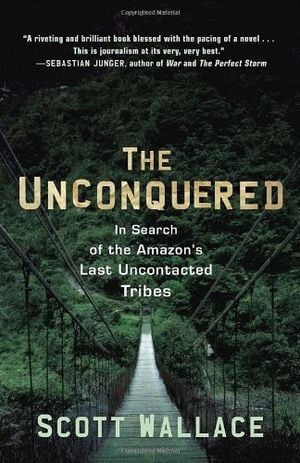Protecting the World’s Last Isolated Communities From Above
Advances in satellite technology mean that untouched villages can remain that way
/https://tf-cmsv2-smithsonianmag-media.s3.amazonaws.com/filer/50/57/5057a9cb-461b-4fbb-b861-fb97710f4e66/may2015_h02_satellites.jpg)
Robert Walker is making innovative use of satellite imagery to assess the last remaining Amazon tribes that have limited or no contact with the outside world. Walker, a University of Missouri anthropologist who previously did field work in the Amazon, has analyzed 27 communities of “uncontacted” people in Brazil, and one each in Colombia and Peru. Poring over high-resolution images purchased from commercial satellite companies, he sizes up each village, measuring gardens and counting huts. His goal is to share data with governments and advocates so they can better protect villages from threats such as logging, mining, violent drug traffickers and encounters with outsiders who carry infectious diseases against which natives have no immunity. One village, Walker found, is only 19 miles from a newly built road.
“It’s a noninvasive way of knowing what is going on on the ground,” he said. “If people leave a village, or a village has been attacked, we want to know as soon as possible.”
The Amazon holds the world’s largest concentration of isolated communities, with 50 to 100. Some are so small they face another threat: a shortage of healthy mating partners. In research published in the journal Royal Society Open Science, Walker identified three villages that “face an imminent threat of falling below a minimum viable population.” Those villages consist of no more than nine huts on nine acres of cleared land.
The Brazilian and Peruvian governments rely on satellite images to monitor isolated Indians, but the findings aren’t made public, leaving advocates in the dark. FUNAI, the Brazilian agency that oversees territories inhabited by uncontacted tribes, “is under constant attack from the ‘agribusiness bloc’ of politicians in Congress who are determined to overturn hard-won indigenous rights,” says Fiona Watson, of Survival International.
Walker’s publications don’t pinpoint where villages are located, but he acknowledges that someone might be able to exploit his data to discover the Indians. That possibility worries Glenn Shepard, an anthropologist at the Goeldi Museum in Brazil: “If anyone can find them, what’s to keep some unethical reality TV producer from trying to go in and make a show?” Walker defends the research as critical: “We want people to be knowledgeable about the problem and thinking about solutions.”
Related Reads

The Unconquered: In Search of the Amazon's Last Uncontacted Tribes